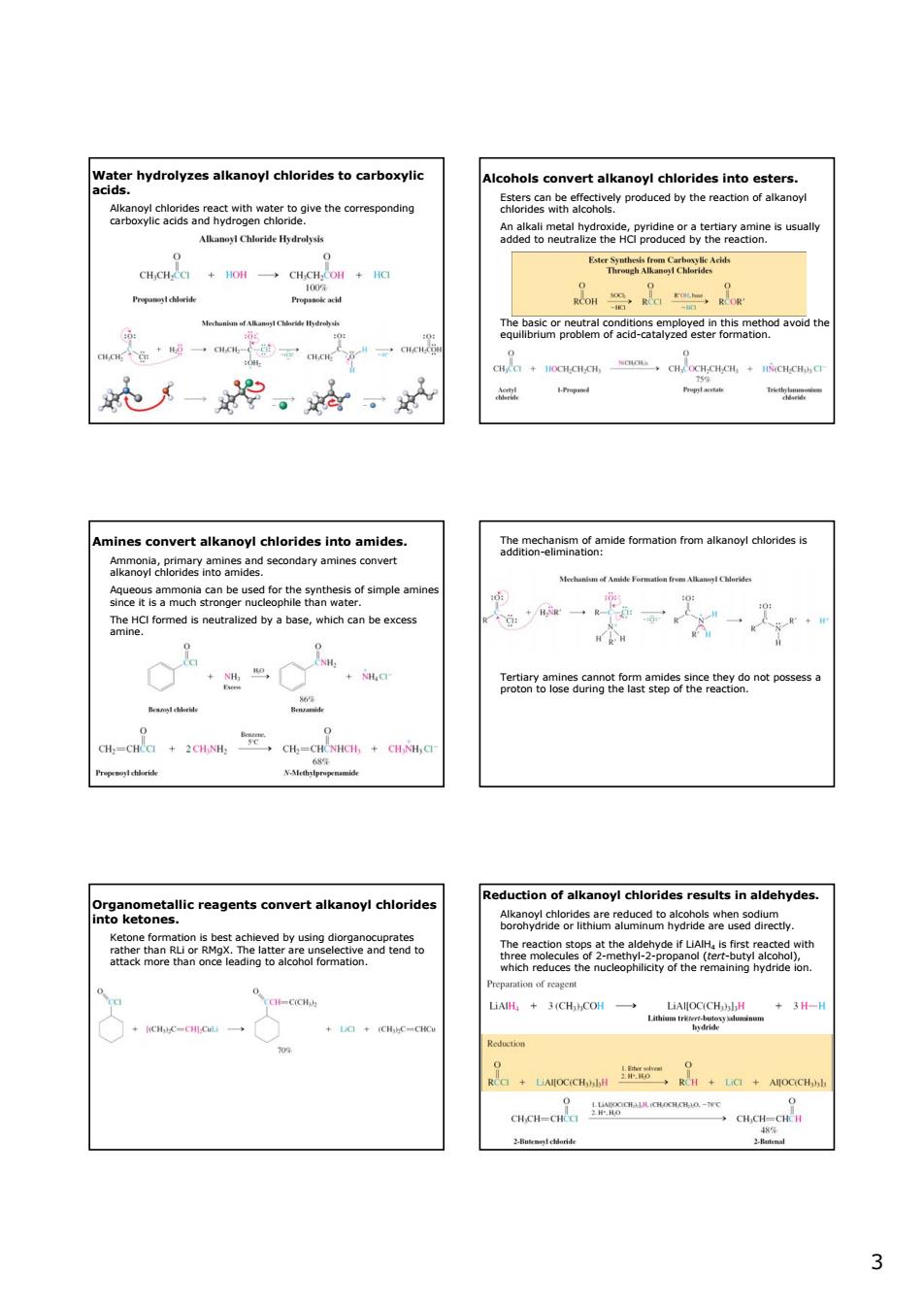正在加载图片...

Cierhydrotyzesalkanoychloridestoearbogyic Alcohols convert alkanoyl chlorides into esters. ealo9lchagnaCoenagaarethecamesponding ernhegereyproducedbythereactionotalkanoy 0 ma+一+ 流一牌。海。 Ieetinsmgamdefomatonfomakano1hioides 中 s convert alkanoyl chlorides uction of alkanoyl chlo rides results in aldehydes 08rn9dne2oreS8eR8eaeedrey. 33 Water hydrolyzes alkanoyl chlorides to carboxylic acids. Alkanoyl chlorides react with water to give the corresponding carboxylic acids and hydrogen chloride. Alcohols convert alkanoyl chlorides into esters. Esters can be effectively produced by the reaction of alkanoyl chlorides with alcohols. An alkali metal hydroxide, pyridine or a tertiary amine is usually added to neutralize the HCl produced by the reaction. The basic or neutral conditions employed in this method avoid the equilibrium problem of acid-catalyzed ester formation. Amines convert alkanoyl chlorides into amides. Ammonia, primary amines and secondary amines convert alkanoyl chlorides into amides. Aqueous ammonia can be used for the synthesis of simple amines since it is a much stronger nucleophile than water. The HCl formed is neutralized by a base, which can be excess amine. The mechanism of amide formation from alkanoyl chlorides is addition-elimination: Tertiary amines cannot form amides since they do not possess a proton to lose during the last step of the reaction. Organometallic reagents convert alkanoyl chlorides into ketones. Ketone formation is best achieved by using diorganocuprates rather than RLi or RMgX. The latter are unselective and tend to attack more than once leading to alcohol formation. Reduction of alkanoyl chlorides results in aldehydes. Alkanoyl chlorides are reduced to alcohols when sodium borohydride or lithium aluminum hydride are used directly. The reaction stops at the aldehyde if LiAlH4 is first reacted with three molecules of 2-methyl-2-propanol (tert-butyl alcohol), which reduces the nucleophilicity of the remaining hydride ion